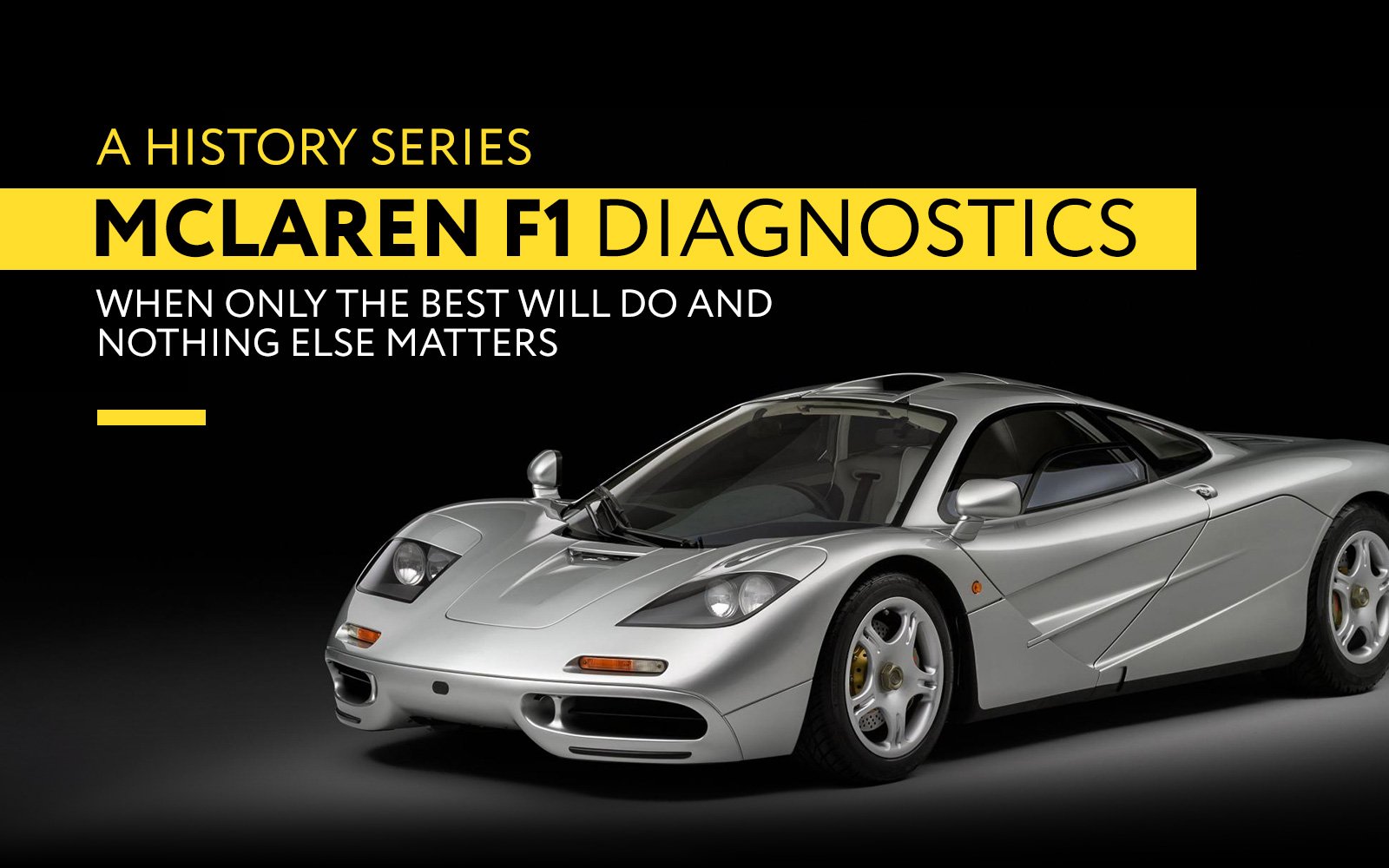
MCLAREN F1 DIAGNOSTICS. WHEN ONLY THE BEST WILL DO AND NOTHING ELSE MATTERS.
HISTORY OF AUTOMOTIVE DIAGNOSTICS SERIES.
As you may have noticed throughout the years of writing the Abrites blog we have been trying to mix information about the Abrites products with other types of articles telling us more about the history of automotive diagnostics. To be honest, during the past 11 years of working at Abrites I have acquired so many weird stories, bizarre facts, fiction, and tales of automotive diagnostic history that I really would like to share them with you. Following that I want to try and expand the blog a little by doing two articles weekly. If all goes well you should still get your Abrites specific articles on Friday, and on top of that we should be able to make another one each Monday to tell you a story I found interesting and relates to automotive diagnostics and history.
Picture the scene, the year is 1988, the location is Milan airport and sitting at an unassuming table in the corner of one of the cafés there are four men. Little did anyone at the time knows these four men will change the course of automotive history forever. The men in question are Creighton Brown - Director of McLaren Racing; Ron Dennis - McLaren Formula One Team Manager; Mansour Ojjeh – the financial backer of McLaren’s F1 team, and Gordon Murray – a man who needs no introduction. Together these four men, later recognized as the “McLaren Four”, decided to build a road car which was designed with an uncompromised approach to “mass production”. With Gordon Murray’s obsessive approach to perfection and Ojjeh billions, with Brown and Dennis’ expertise in mechanics and marketing this was an idea born by the best automotive minds of the time. McLaren’s first ever road car would simply be called the F1. Simply perfect, or perfectly simple – you decide.
Gordon Murray was the man in charge of the project, and you can learn all about the car, his approach and the level of greatness from this excellent documentary by “the Squidd” on Youtube, also if your budget permits I would also buy this book, written with Dennis and Murray.
The rest of the McLaren Four all played essential roles in the vehicle’s conception and execution but in the automotive world the car was, is and always will be Gordon’s masterpiece. The first of the 106 F1s reached its extremely wealthy owner in 1992 and it quickly reached the pantheon of automotive deities. The F1 is perfect, it is a road car built without a budget or restrictions, even with a price tag of $800,000 which in 2023 would equate to $1,729,796.15…
Why did I want to tell you all this? Because this overture will help you understand the level of perfection applied to the F1. Of course, this same level must apply to every detail of the vehicle. Including the diagnostic tool used to diagnose the “perfect road car”. So how does diagnostics work in an F1. I must put an emphasis on the “hear-say” factor here because I was told this story by someone who allegedly worked at McLaren and allegedly knows what was done at the time so EVERYTHING from here on must be read with a grain of salt, if not a whole spoon.
The F1’s electronics was extremely race car derived but the BMW sourced S70 (/2;/3 also included) V12 engine was a rather bespoke creation and received a lot of cutting edge features such as an advanced MAF system and an electronic throttle controller. All in all, the speculations are that the F1 used a standard Bosch Motronic 1.7 lifted straight from the 750i/ 850i albeit with a McLaren specific “chip” (God, I miss the days of getting a “chip” in the mail and replacing it on the DME). So technically the F1’s engine could have been diagnosed with standard BMW diagnostic equipment. Or at least it would have been if it had the BMW early 90’s BMW 20 pin connector (which you can buy from the Abrites store).
If I have to be honest this seems a little off to me, the ONLY information I could find of the F1’s DME is of a pretty bespoke looking unit, probably derived from their Motorsport campaign.
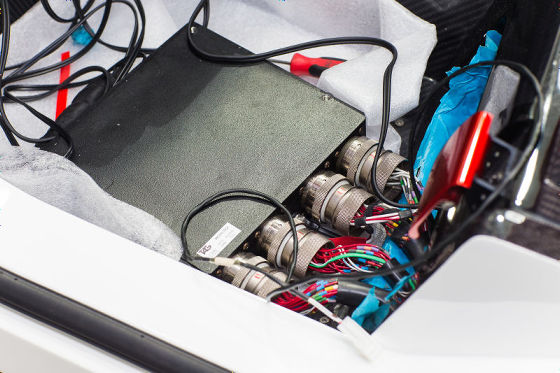
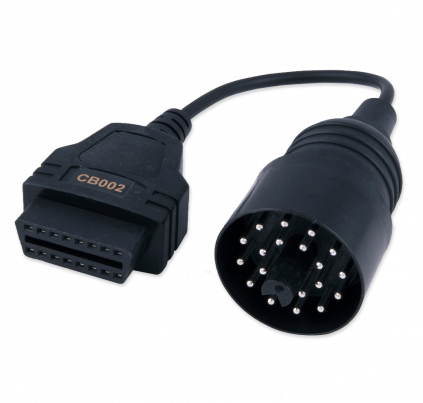
Instead, the F1 used a very interesting interface. We need to keep in mind that the F1 was McLaren’s first road car, all they did before that was Motorsport, and not in the track day Saxo kind of way but real motorsport with military grade wiring harnesses and Mil-spec connectors all over. Besides Gordon Murray did not seem completely satisfied with the outsourcing job Munich had delivered either way so it is only natural he commanded McLaren’s engineers to come up with a bespoke quality solution rather than a standard OBD connector from any old BMW. I must stress that at the time of the release of the McLaren F1 the chaps at Woking were the reigning World Driver and Constructor’s Champions in Formula One with their 1991 MP4/6 with none other than Ayrton Senna at the wheel, depicted below with the Brazilian’s iconic yellow helmet. We can only imagine the fear one would feel seeing this in their mirrors (I can literally hear Murray Walker’s voice).

What I am trying to say is that at the time McLaren were at the very top of the hardest game ever, they set every precedent at the time and their road car represented that.
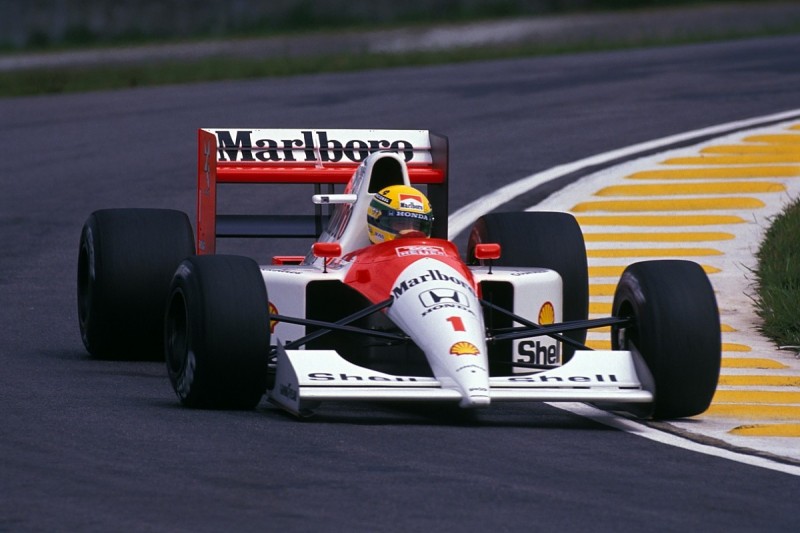
Back to the diagnostics of the F1. The solution the engineers came up with was to use what is now considered an “ancient” CA card which provided the communication between the vehicle and a Compaq LTE 5280 laptop running MS-DOS. The way diagnostics worked required a specialist diagnostician from McLaren to visit the car in person travelling with a sound equipment case, hook it up to the F1, collect the data, and bring it back to the factory for analysis. At some point it is speculated that the data collected by the McLaren diagnosticians were able to have been transmitted over 1,200 and 2,400 bit/s dial- up modems to avoid two trips to the customer’s garage as many of McLaren’s wealthy customers were situated rather far from home base. This is the level at which the diagnostics of the F1 operated when money was no object and only the best was enough. The connector was located neatly behind a carbon fiber cover on the left side of the vehicle, right in front of the fitted luggage compartment. This is the same place where the fuses of the F1 and its rather standard battery can also be located.

No matter how space age this all was, with one of the first bi-directional diagnostic communications at some point it had to be fazed out. Recently, the McLaren Special Operations (what a cool name, MSO) Team came out with a much more modern (and once again custom) solution for the F1’s diagnostics which means they no longer need to rely on the good old Compaq, and it can now rest. So let’s take a moment to bid farewell to the old girl and hope that we will see more bizarre and outlandish diagnostic technology in the future.
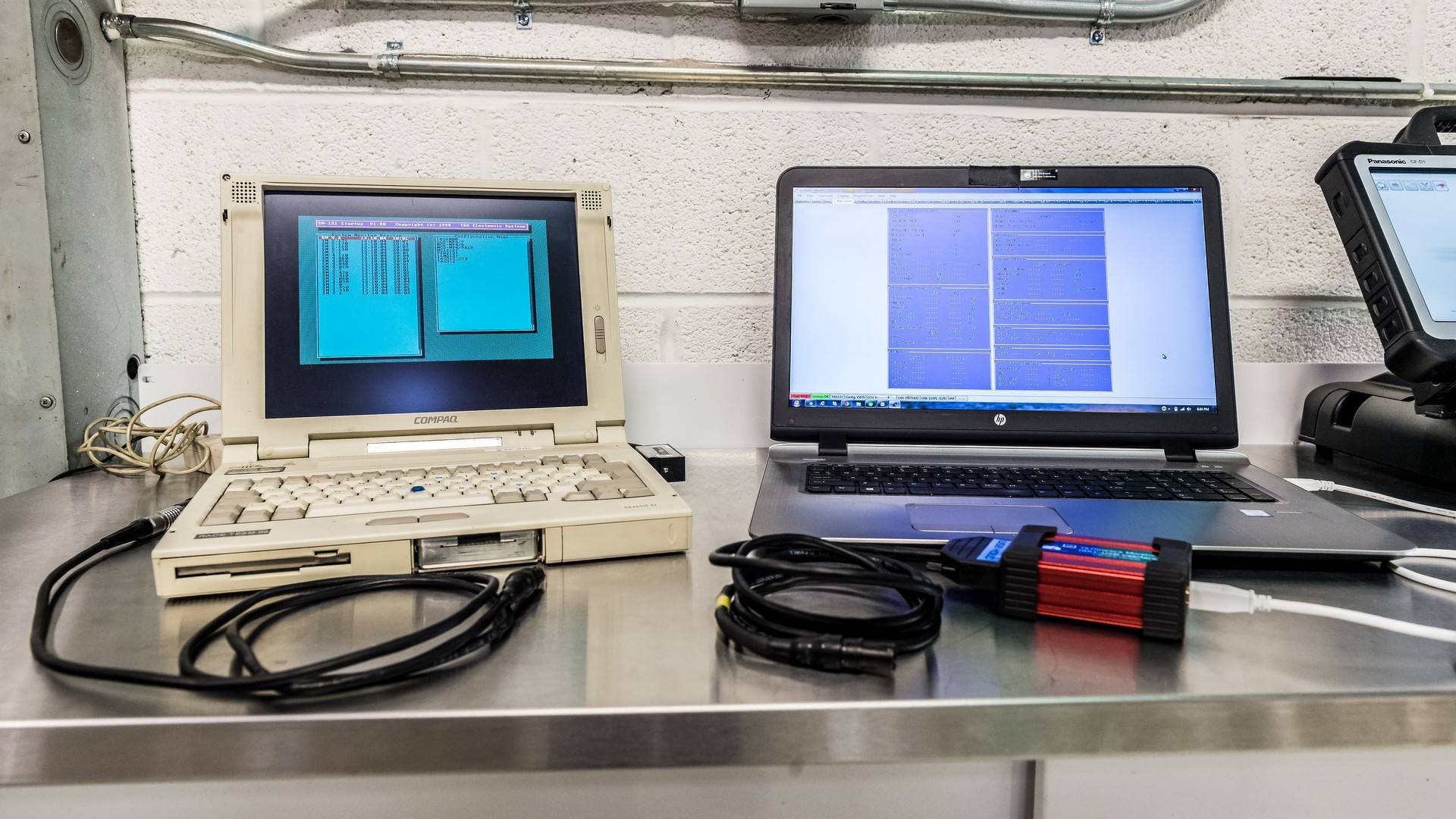
Thank you for your time, I hope you enjoy this series.
Alek
 TCU Personalization Without FBS4 Data
TCU Personalization Without FBS4 Data
 BDC2 Replacement and Mileage Reset for BMW
BDC2 Replacement and Mileage Reset for BMW